In the arrangement shown in fig., all pulleys are smooth and massless. When the system is released from the rest, acceleration of block 2 and 3 relative to 1 are 1ms−2 downwards and 5ms−2 downwards, respectively. Acceleration of block 3 relative to 4 is zero.

Find the absoulte acceleration of block 2.
A
2ms−2 downwards
B
1ms−2 upwards
C
3ms−2 upwards
D
1.5ms−2 downwards
Video Solution
Text Solution
The correct Answer is:B
Acceleration of dirrerent objects is shown in figure. All the acceleration are w.r.t. ground
Given : a3=a4 ..(i)
a2+a1=1 ..(ii)
a3+a1=5 ..(iii)
from fig, we can write
−a5=a2+a32..(iv)
a1=a4+a52 ..(v)
Solving the above equations, we get
a1=2ms−2,a2=1ms−2,
a3=a4=3ms−2.

|
Topper's Solved these Questions
- NEWTON'S LAWS OF MOTION 1Book:CENGAGE PHYSICSChapter:NEWTON'S LAWS OF MOTION 1Exercise:Integer
Explore 5 Videos
- NEWTON'S LAWS OF MOTION 1Book:CENGAGE PHYSICSChapter:NEWTON'S LAWS OF MOTION 1Exercise:Assertion-reasoning
Explore 15 Videos
- MISCELLANEOUS VOLUME 2Book:CENGAGE PHYSICSChapter:MISCELLANEOUS VOLUME 2Exercise:INTEGER_TYPE
Explore 10 Videos
- NEWTON'S LAWS OF MOTION 2Book:CENGAGE PHYSICSChapter:NEWTON'S LAWS OF MOTION 2Exercise:Integer type
Explore 1 Video
Similar Questions
Knowledge Check
In the arrangement shown in fig., all pulleys are smooth and massless. When the system is released from the rest, acceleration of block 2 and 3 relative to 1 are 1ms−2 downwards and 5ms−2 downwards, respectively. Acceleration of block 3 relative to 4 is zero.
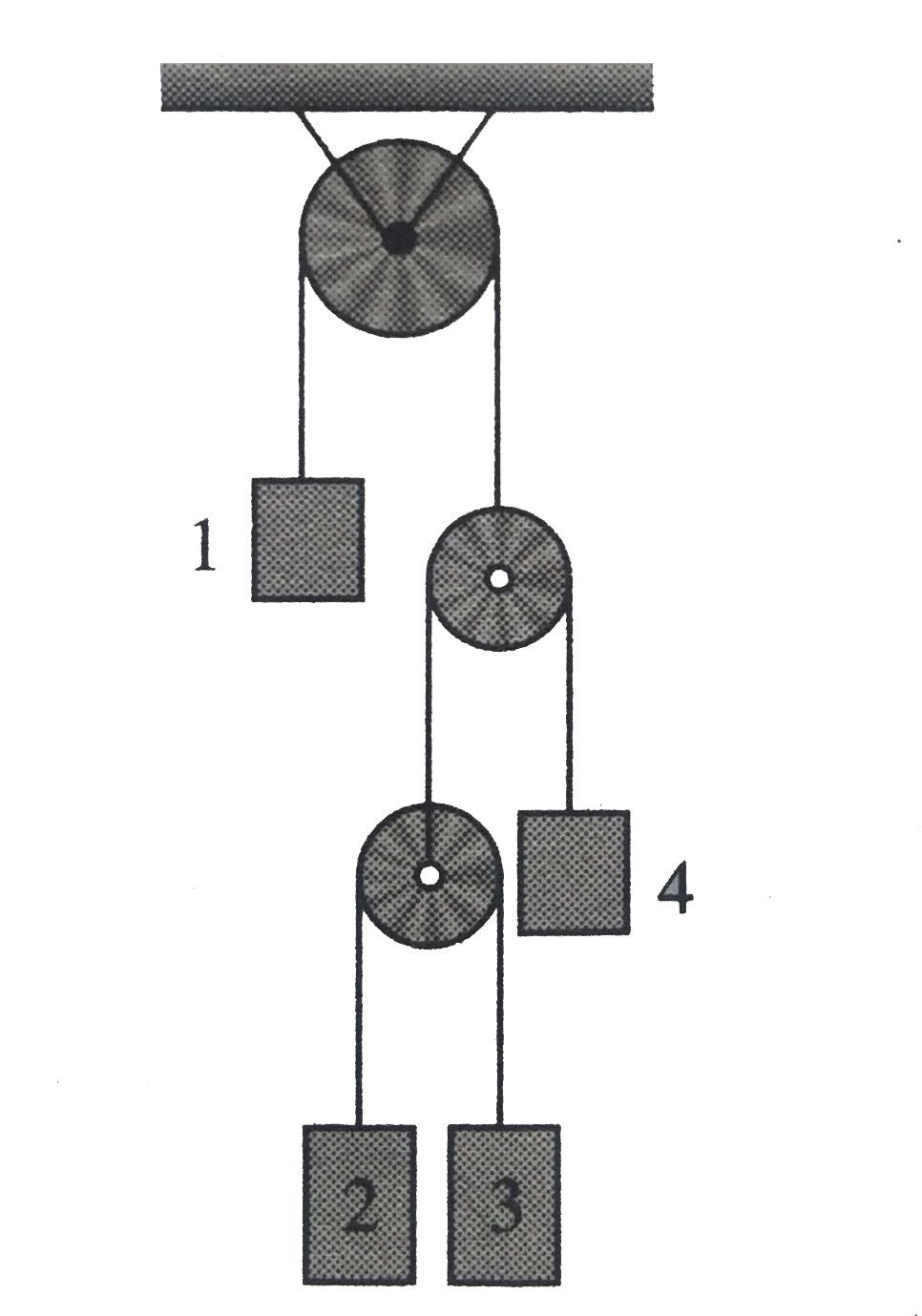
Find the absolute acceleration of block 1.A2ms−2 upwardsB1ms−2 downwardsC3ms−2 upwardsD1.5ms−2 downwardsAn arrangement is shown in figure. If all the surfaces are smooth and system is released from rest then the relation between accelerations of blocks P(ap)andQ(a_Q) will be
Aap=aQBap=4aQCap=2aQDap=aQ2What is the acceleration of block A when the system is released from rest ?
 Ag/2 downwardsBg/3 downwardsCg/3 upwardsDg/2 upwards.
Ag/2 downwardsBg/3 downwardsCg/3 upwardsDg/2 upwards.
The acceleration of 3 kg block in the arrangement shown in the diagram ,when the given system is released from rest is
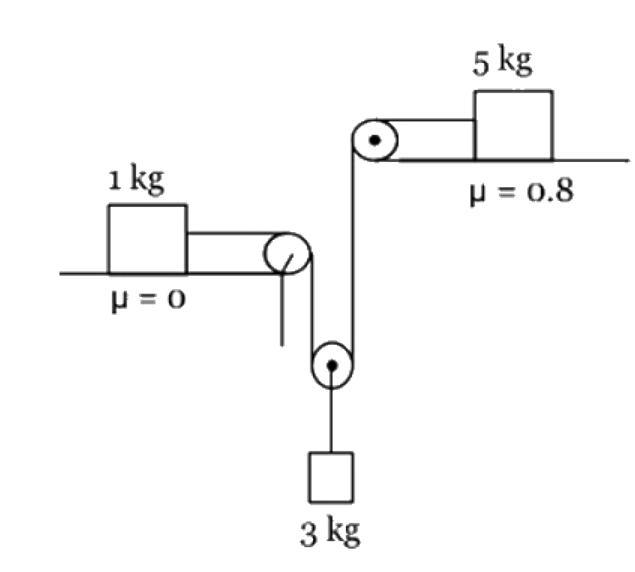
View SolutionIn the system shown in figure, the block A is released from rest. Find
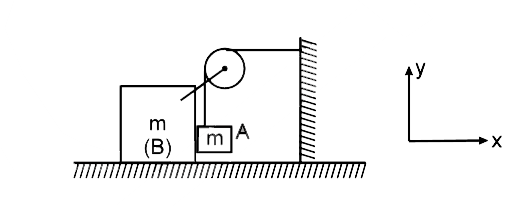
the acceleration of both blocks ‘A’ and ‘B’.
View SolutionIn the arrangement shows in fig. if the surface is smooth then find out acceleration of the block m2.
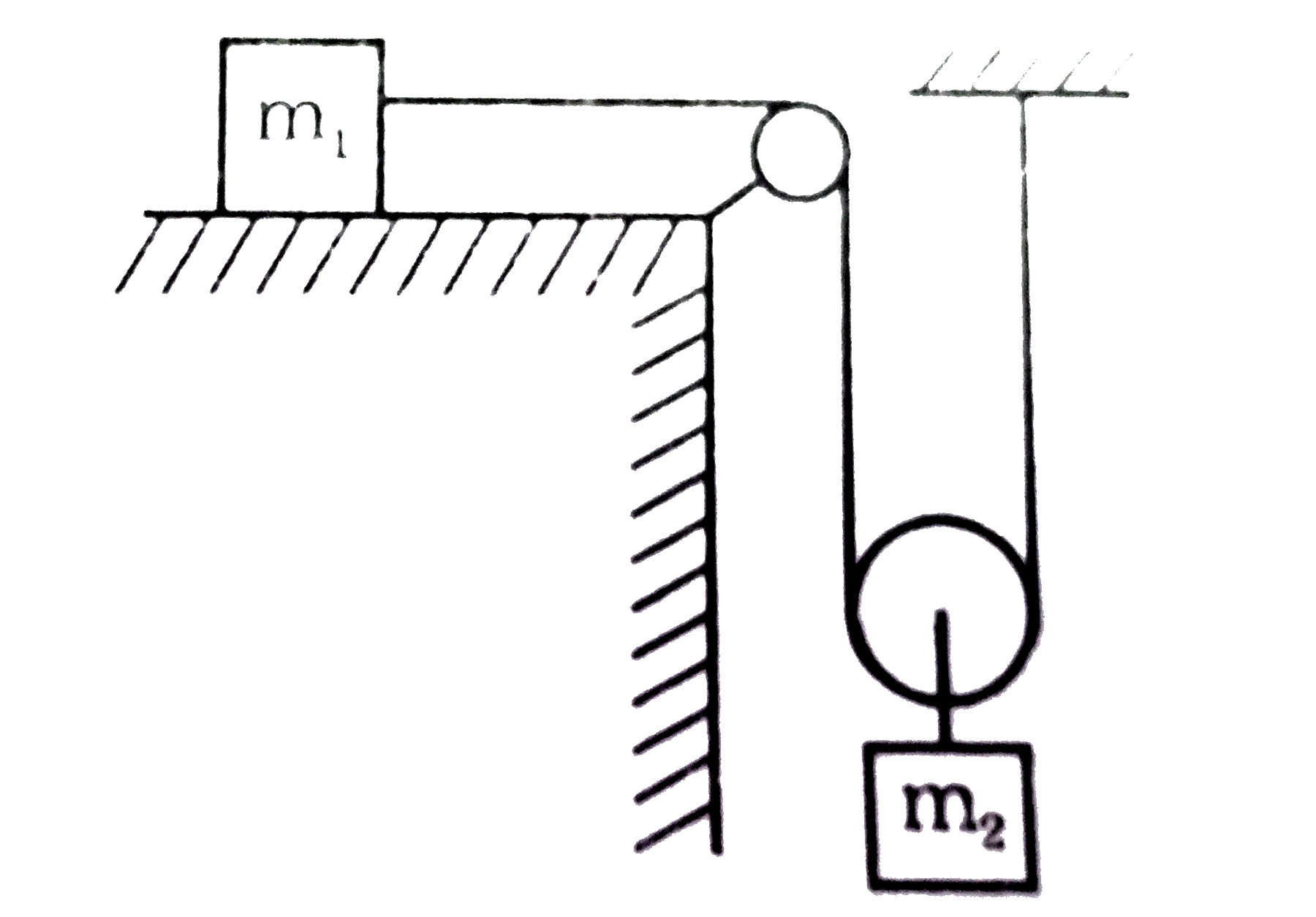
View SolutionIf pulleys shown in the diagram are smooth and massless and a1 and a2 are acceleration of blocks of mass 4 kg and 8 kg respectively, then -
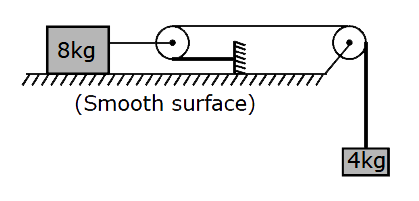
View SolutionIn the arrangement shown, the blocks of unequal masses are held at rest. When released, acceleration of the blocks is
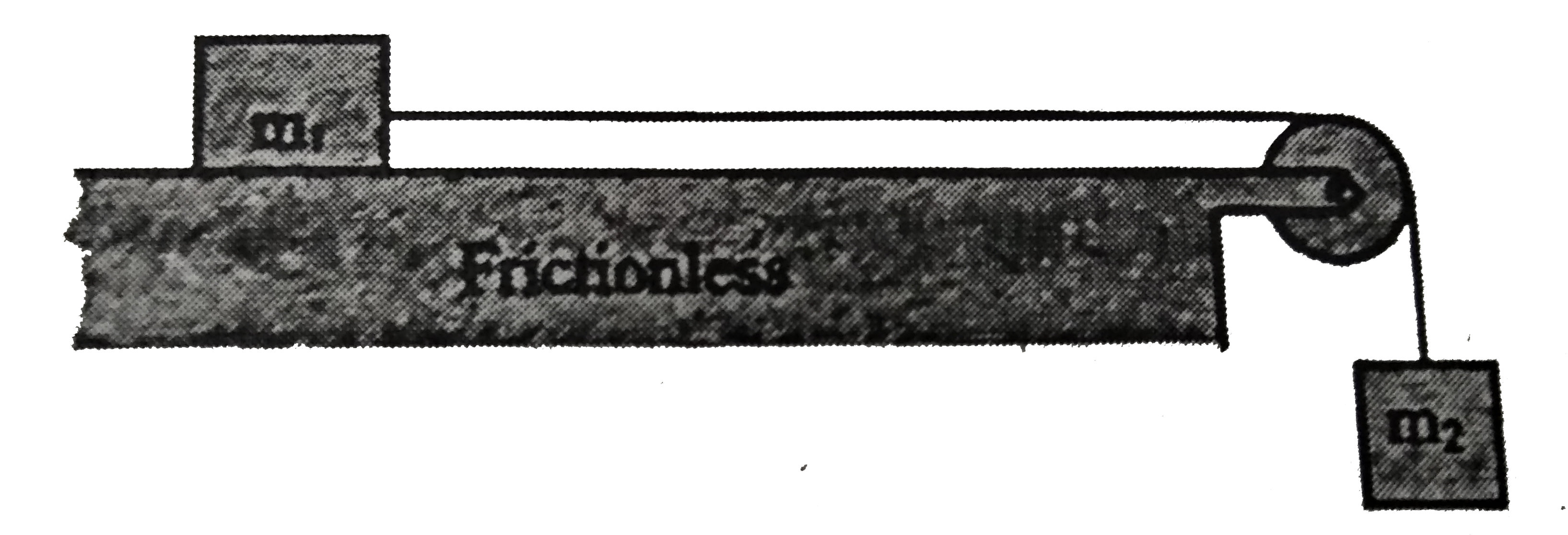
View Solution

